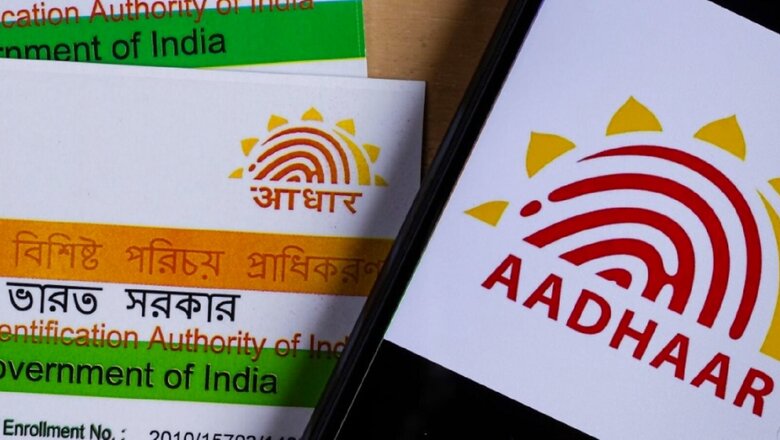
views
The Aadhaar issuing authority, the Unique Identification Authority of India (UIDAI), recently put out a tweet from their official Twitter handle warning people against fraudsters. It is safe to say that an Aadhaar card is one of the most vital pieces of documentation that a person in India can carry. It ties us into so many various aspects of our lives, from our bank accounts to our cars. It has become a universally applicable document within this country. With this in mind protecting your Aadhaar against fraud is of the utmost importance. The tweet issued by the UIDAI was especially concerned with the downloading of your e-Aadhaar card in public places such as internet cafes and kiosks.
It is understandable that sometimes you will have to use an internet café or kiosk, however, the UIDAI warns that in the event that you do, it is highly recommended to delete all downloaded copies from the system on which you used. Fraudsters can easily access your Aadhaar related information this way and cause you problems down the road. The official tweet by the UIDAI read: “To download an e-Aadhaar please avoid using a public computer at an internet café/kiosk. However, if you do so, then it is highly recommended to delete all the downloaded copies of e-Aadhaar.”
Other Ways to Prevent Fraudsters
1) Mobile/Email Registration for OTP
In recent times, Aadhaar and its accompanying facilities have been made much simpler to access and the details easier to change as well. This is all thanks to a simple authentication process where the One-Time Password (OTP) is sent to your phone or email ID that is registered to the Aadhaar. Never, under any circumstances, share these details with anyone. If you happen to lose the number or change your mobile number, update the same with your Aadhaar card so as to prevent others from doing the authentication process with your card.
2) Aadhaar Biometrics Locking
Our biometrics such as iris scans, fingerprints and photographs are linked to the Aadhaar card. Though it is very hard to commit fraud in this aspect, there have been cases in the past where fingerprints were forged to access the person’s bank account. In such a case, Aadhaar had come out with the biometrics locking option. The UIDAI advises its cardholders to always keep the biometrics locked until and unless they need it. This can be done via the website or the mAadhaar App.
3) Use a Masked Aadhaar or Virtual ID (VID)
This is a temporary revocable 16-digit random number mapped with the Aadhaar number. It can be used in the place of an Aadhaar number whenever you need to do authentication or conduct an e-KYC service. The Aadhaar number cannot be taken from the VID.
4) Conduct Regular Checks
Make sure to authenticate and verify your Aadhaar on a consistent basis. Go to the UIDAI portal and check the authentication history. It also helps to keep in mind that you should verify other people’s Aadhaar cards as well. Especially if you are hiring someone or run a business. With all the new bells and whistles that the UIDAI is introducing to improve security and efficiency, one can now verify another Aadhaar card online or even offline. If you try to verify it online, it is a simple three-step process.
Step 1: Go to the official UIDAI portal and on the top right side of the website, select the ‘My Aadhaar’ option from the drop-down menu.
Step 2: Next, choose the ‘Verify an Aadhaar Number’ option. You will find this under the ‘Aadhaar Services’ section.
Step 3: This will take you to a new page where you will be asked to enter the 12-digit Aadhaar number (UID), along with a captcha. Once you have entered it, click the ‘Proceed to Verify’ button at the bottom. This will show you a page indicating the validity status of an Aadhaar card.
Read all the Latest News , Breaking News and Ukraine-Russia War Live Updates here.















Comments
0 comment